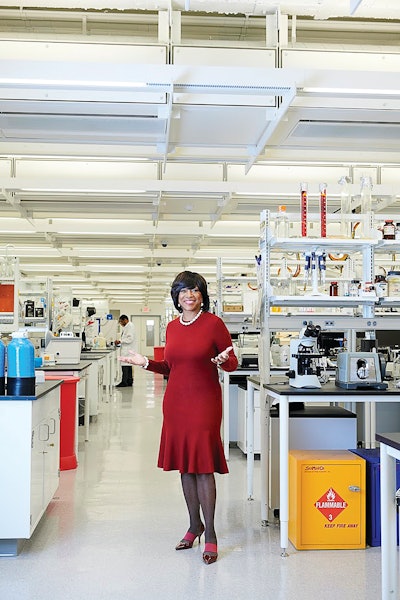At Morehouse School of Medicine (MSM), disrupting and erasing health disparities is more than just part of their mission statement. Health equity is something MSM leaders, faculty members, and students work toward every day.
 Morehouse School of Medicine President and CEO Dr. Valerie Montgomery Rice and other experts are excited about the $2 million donation from the Croel Family Foundation for the development of the David Satcher Global Health Equity Institute at the school.
Morehouse School of Medicine President and CEO Dr. Valerie Montgomery Rice and other experts are excited about the $2 million donation from the Croel Family Foundation for the development of the David Satcher Global Health Equity Institute at the school.
That’s why Montgomery Rice and other experts are excited about the $2 million donation they received in September from the Croel Family Foundation for the development of the David Satcher Global Health Equity Institute at MSM. Dr. David Satcher is the former president of MSM and an expert and leader in equitable scientific and health policies and practices. He also served as U.S. Surgeon General during President Bill Clinton’s administration.
“It is incredibly important for an HBMS to have a global institute to address health equity not only in the United States, but around the world,” says Montgomery Rice.
The new institute has an ambitious mission. Among its goals are diversifying the scientific and public health workforce, which is overwhelmingly white. According to 2022 research by the Association of American Medical Colleges, 63.9% of all practicing U.S. physicians are white. Many studies have revealed that the presence of diverse doctors on a patient’s care team greatly increases the quality of that care and the likelihood that patients will follow-through with advised treatments.
The institute will also connect its students with the healthcare inequities seen around the world, helping them to dream up solutions to systemic problems, particularly in low-resource areas with higher populations of poorer or rural residents. Data from the World Health Organization (WHO) show a much higher concentration of physicians in wealthier countries. The institute will develop the Office of Global Policy and Advocacy, which will aim to influence legislation and change the narratives that create healthcare barriers around the world.
Making a commitment





















